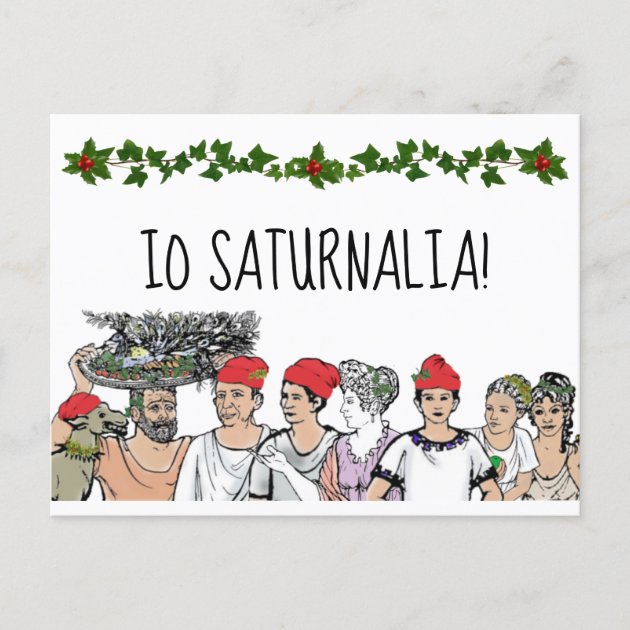

17 to 23 would have been typical, though there were variations over time - that involved feasting, merry-making, and gift-giving. What's definitely true is that Saturnalia was a December festival - Dec.

"This idea that the Saturnalia was somehow baptized as a Christian festival just doesn't add up with the way the early church functioned." "I don't buy the theory, largely because the early church was really strident about not being pagan, and not being accommodating of pagan ways," Messner said. This scenario seems dubious to Roman historian Brian Messner, who teaches at Lincoln Christian University in Illinois. In the fourth century - so the story goes - the early church fathers deliberately re-branded a popular pagan holiday as a Christian festival, in order to make their religion more attractive to converts. No more gifts?: Stop buying holiday gifts, says activist and 'Reverend' of The Church of Stop ShoppingĬhristmas lights: The most spectacular holiday houses in North Jersey Holidays: Celebrate 'It's a Wonderful Life' and other classics with anniversaries this Christmas Historians argue about the exact relation between Saturnalia and Christmas - the holiday that, by many accounts, grew out of it. "This was a festive season for the Romans, that was continued by the Christians in a sense," said historian Scott McDonough, who teaches ancient history courses at William Paterson University in Wayne. When Pope Julius I chose December 25th as the birth date of Jesus, it is believed he chose the date to absorb the dates and traditions of Saturnalia and the birth of Mithra and to reflect the celebrations of the pagan faiths.It's almost as if there was… a war on Saturnalia! For these Romans, Mithra’s birthday was the most sacred day of the year. Pileus, a freeman’s hat was worn by everyone, some customs that would be recognised today.Īlso around the time of Saturnalia, December 25th the upper classes celebrated the birthday of Mithras. The Io pronounced “yo” (The Latin related to “ho” as in “Ho, praise to Saturn”). It had other traditions, the common greeting was “Io, Saturnalia!”. The most common gift was cerei (wax candles) and as with modern Germany, there were specialist markets called sigillaria. For other Romans, no business was carried out, less formal clothing was worn, it was a school holiday and small gifts were given out, known as ‘saturnalia et sigillaricia’. The slaves were even exempt from any form of punishment. The slaves were permitted to gamble, were treated as equals, worn their master’s clothes and even served upon at meal times. It was a festival where the social order was in affect inverted. The festival was a period of partying, tomfoolery and in the houses a family member would be appointed the Lord of Misrule. Saturnalia was a time for hedonistic festivities. Although both Augustus and Caligula tried to shorten the holiday season, their attempts were unsuccessful. Originally it had been on the one day but due to its popularity, the festivities later continued onto the 23rd December. Saturnalia was officially celebrated on the 17th December. The celebrations were based around the Winter Solstice. Saturn the god of agriculture would have been like the celebration of the Norse in Scandinavia. It is believed to have been introduced initially, as a moral boaster, following a military defeat but soon became the festival for Saturn. It originally took place between 220 to 210BC. The Romans had a public festival known as Saturnalia. Roman soldiers at about the time of Saturnalia


 0 kommentar(er)
0 kommentar(er)
